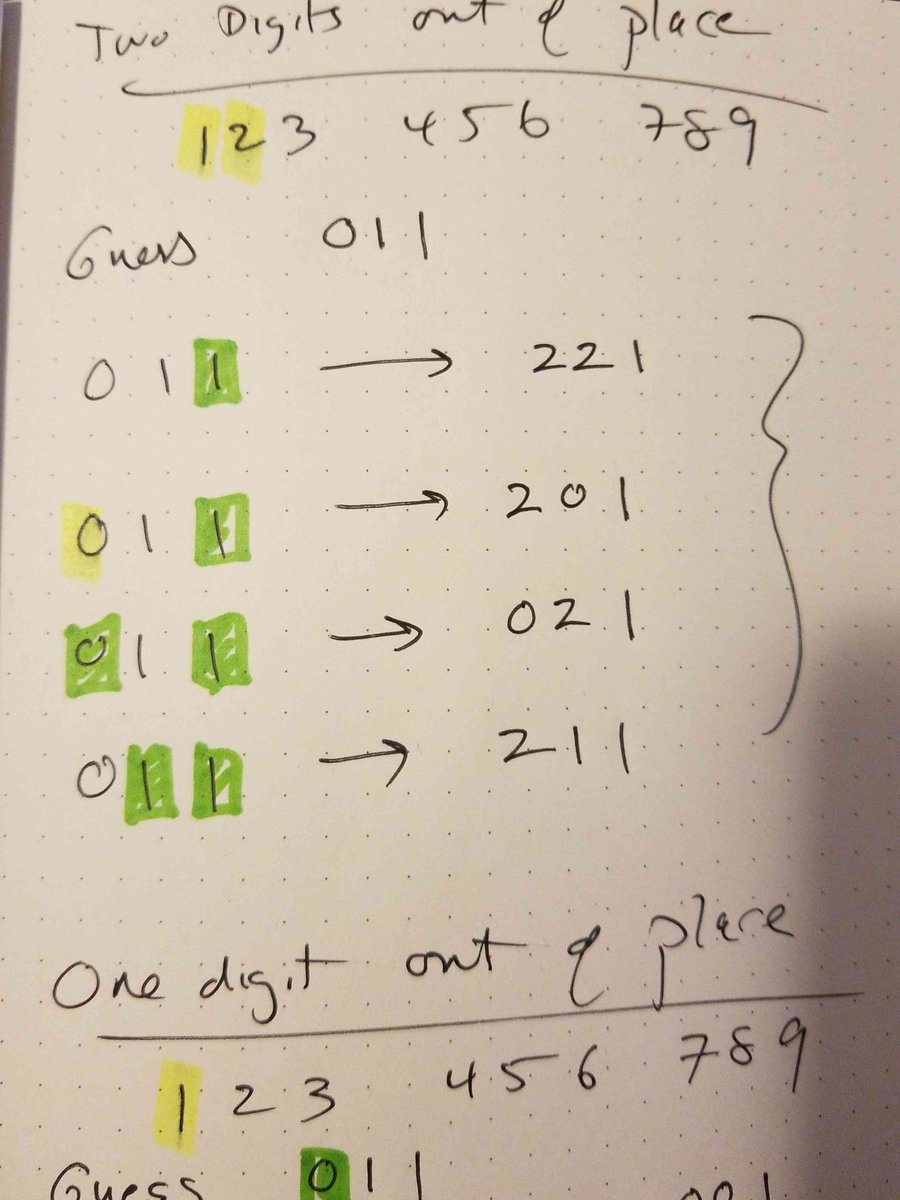
Fun puzzle this morning: Suppose you are playing a #wordle-like game where you are trying to guess a three-digit string of numbers (like 318 or 087). What's the maximum number of guesses you would ever need to identify the number string?
#math #mathchat
#math #mathchat
A few people have suggested the maximum number of guesses is 6, but I think you can always do it in 5! (Five, not five factorial.)
First three guesses: 123, 456, 789.
Three hits and you're at most two guesses away by cycling.
Two hits, and a strategically chosen fourth guess involving a hit repeated twice and a 0 will get you there in 5.
Same for one hit.
Zero hits and it's 000.
Three hits and you're at most two guesses away by cycling.
Two hits, and a strategically chosen fourth guess involving a hit repeated twice and a 0 will get you there in 5.
Same for one hit.
Zero hits and it's 000.
• • •
Missing some Tweet in this thread? You can try to
force a refresh







